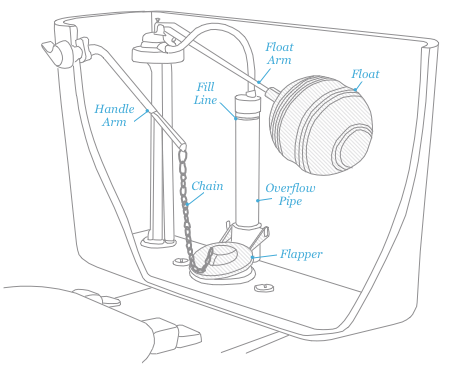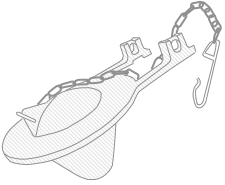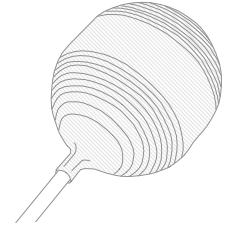Fix a Running Toilet

A "running" toilet is annoying. There's that relentless hissing or near constant flushing sound as it continually tries to fill the tank. But it's also expensive and wasteful. Your average running toilet can flush away two gallons of water per minute. And a slow, silent leak in your toilet can waste up to 7,000 gallons of water per month. The good news is that often, it's a simple fix. No plumber—or even tools—required. And nothing offers a surge of testosterone quite like fixing something around the house. But to fix your throne, you've got to know how it works. Toilets work on gravity. When you push down the lever, a chain pulls up a rubber flapper at the bottom of the tank, allowing water to run out and into the bowl below. When the water in the tank runs out, the flapper closes and the tank starts refilling. The water rises until a float closes the intake. Pretty simple, but any one of those things could be your culprit. Here are three common causes of a running toilet and how to fix them.
Before you get started
It's a good idea to turn off the toilet's water supply, located behind the bowl.
Now get acclimated with your toilet

Three common repairs
The Chain

The flush lever is connected to the rubber flapper, most likely by a chain. Sometimes, the length of the chain is a bit too short and pulls at the flapper, even when the flush lever is at rest. This will result in a steady drip of water draining from the tank. The chain also may be caught on something, which will prevent the flapper from fully closing. Take the lid off to inspect the chain. Jiggle the lever and make sure that the chain is free and at the proper length.
The Flapper

A broken, dirty or warped flapper won't properly seal off the tank. This leads to water leaking out, so the tank is never able to fully fill, causing the toilet to constantly run. To check your flapper, and with the water turned off, flush the toilet to drain out the remaining water in the tank. Take the lid off and unhook the flapper from the base of the tank. Turn it over to inspect for any discoloration (a sign of warping or a leak), cracks, rust or mineral deposits. Any and all of which could prevent the flapper from making a proper seal. If you need to replace the flapper, you can easily (and cheaply) buy them at hardware stores or online. Simply disconnect the old one from the chain and swap in the new one. Then turn your water back on to refill the tank and give it a flush. You should be left with a good seal now and no more leaking.
The Float

Since the float is responsible for shutting off the water when the tank reaches its fill line, right below the overflow pipe, this part needs to function properly. If the water continues to stream in above the fill line, then the float is likely too high. If your float is the common bulbous type mounted on a wire arm, you can simply adjust it by bending the arm down slightly so the float is lower and it will signal the pump to turn off sooner. Test by flushing the toilet, allowing it to refill. If it stops at the fill line, you're in good shape. If not, keep adjusting that arm down ever so slightly and retesting.
Still having problems?
Find a well-reviewed plumber in your area by checking Yelp or Angie's List.
